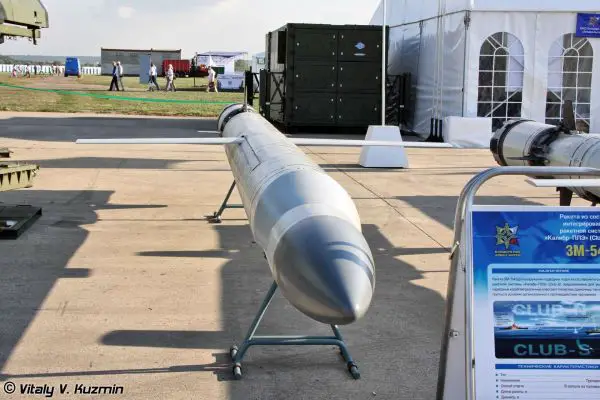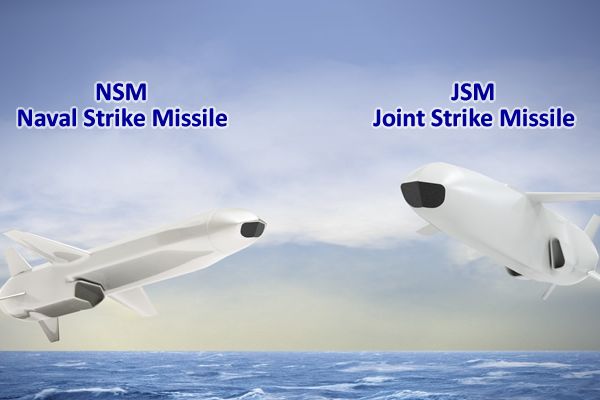Missiles.
ROGUE-Fires Carrier.

The ROGUE-Fires Carrier vehicle is a key element of the NMESIS (Naval Mobile Expeditionary Security/Anti-Surface) system, developed to provide the U.S. Marine Corps with a mobile, land-based anti-ship missile strike capability. Built on the Joint Light Tactical Vehicle (JLTV) chassis, the ROGUE-Fires Carrier serves as the launch platform for the Naval Strike Missile (NSM). Designed for rapid deployment and high mobility, the ROGUE-Fires vehicle is capable of launching anti-ship missiles in support of distributed operations, offering the Marine Corps a formidable tool for coastal defense and expeditionary warfare.
Country users: United States
Description
The ROGUE-Fires Carrier vehicle is an unmanned ground vehicle (UGV) designed to operate as part of the NMESIS coastal defense system. Developed as part of the U.S. Marine Corps’ Force Design 2030 initiative, the ROGUE-Fires vehicle allows for the launch of Naval Strike Missiles (NSM) from mobile, land-based platforms. The vehicle is based on the highly versatile JLTV chassis, which offers the mobility, protection, and payload capacity needed for modern military operations. Development of the ROGUE-Fires system began in 2019, with Raytheon Missiles & Defense serving as the primary developer alongside Oshkosh Defense, the producer of the JLTV platform. The system is classified as a mobile, land-based anti-ship missile platform and is designed and produced in the United States. Initial testing of the ROGUE-Fires vehicle commenced in 2021, with deliveries to the U.S. Marine Corps projected to begin in late 2023 and continue into 2024.
The ROGUE-Fires Carrier is designed to deploy rapidly, reposition quickly in a variety of terrains, and deliver precise anti-ship strikes. It is equipped with a 4-cell vertical missile launch system, allowing it to carry and launch NSM missiles with high accuracy over distances up to 100 nautical miles (185 km). The platform is intended for use in distributed operations, where multiple ROGUE-Fires units can operate independently or together to provide a networked, high-impact strike capability. With a low radar profile and sea-skimming missile technology, the NSM enhances the vehicle’s effectiveness in engaging enemy ships while minimizing the risk of detection.
The ROGUE-Fires vehicle provides flexibility in operations, ensuring that the Marine Corps can conduct anti-ship warfare even in areas where traditional naval platforms might be unable to access or operate. The system is designed to complement the Marine Corps' Littoral Operations in a Contested Environment (LOCE) and Expeditionary Advanced Base Operations (EABO) concepts, allowing for coastal and shore-based missile strikes from remote locations.
ROGUE-Fires Carrier variants:
No variants at this time.
Technical Data
-
Launcher Unit
The ROGUE-Fires vehicle houses a vertical launch system capable of carrying up to four Naval Strike Missiles (NSM) in individual launch cells. The launcher is positioned on the rear of the ROGUE-Fires Carrier for optimal weight distribution and ease of access. Each four-launch cell can accommodate a single NSM, and the system allows for rapid reloading and launch readiness. The launcher is remotely operated, enabling the vehicle to launch the NSM while remaining at a safe distance from potential threats.
The launcher is mounted on a modular and secure platform to ensure the missiles are held in place during transport and launch. The vehicle can rapidly reposition across various terrains, giving it the flexibility to relocate and fire from different positions during a combat operation. Each ROGUE-Fires vehicle is typically operated by a crew of three to five Marines, with key personnel responsible for targeting, coordination, and launch operations. The crew works together to ensure the system is fully operational and responsive to commands during a mission.
The system is designed for distributed operations, meaning that multiple vehicles can operate in concert or independently. A leader vehicle coordinates the launch of missiles, while the ROGUE-Fires launchers provide strike capabilities. The ROGUE-Fires Carrier is a vital asset in the broader context of littoral combat and coastal defense, allowing the Marines to launch precision strikes at long range.
-
Missile
The ROGUE-Fires vehicle's primary weapon is the Naval Strike Missile (NSM), a subsonic cruise missile with advanced multi-mode guidance and a high-explosive warhead. The missile is specifically designed to strike surface targets at long ranges, and its stealthy design allows it to approach enemy vessels at low altitudes, often skimming the surface of the water to avoid radar detection. The missile’s range is up to 185 km (100 nautical miles), providing a significant standoff capability in coastal defense scenarios.
The NSM is equipped with an active radar seeker for precision targeting, allowing it to lock onto enemy ships even in complex environments. It also uses inertial navigation and GPS to guide the missile to the vicinity of the target before the active radar seeker takes over for terminal guidance. This multi-layered guidance system ensures the missile remains highly accurate even in contested environments.
The NSM warhead is a high-explosive charge capable of inflicting extensive damage to various surface vessels, from large warships to smaller craft. Its low radar cross-section and sea-skimming flight profile make it highly difficult for enemy air defense systems to intercept, offering a stealthy and reliable strike option.
-
Mobility
The ROGUE-Fires Carrier vehicle is based on the Joint Light Tactical Vehicle (JLTV), which is widely recognized for its rugged mobility, protection, and payload capabilities. The JLTV chassis is equipped with an independent suspension system that provides excellent off-road performance, making the ROGUE-Fires vehicle highly maneuverable in diverse environments, such as coastal areas, rugged terrain, and urban landscapes.
The ROGUE-Fires Carrier is powered by a 300-horsepower diesel engine, which provides a maximum speed of 113 km/h (70 mph) on paved roads and up to 72 km/h (45 mph) on rougher, off-road terrain. The vehicle has a range of 480-640 km (300 to 400 miles), depending on operational conditions and terrain type. Its mobility is critical in supporting expeditionary operations, allowing for quick repositioning of the launch system to optimal firing positions, avoiding detection, and evading counterattacks.
The vehicle's all-terrain capabilities ensure that it can be deployed in a variety of environments, including soft sand, muddy, and rocky terrain, which are common in coastal and littoral zones. The ROGUE-Fires Carrier is equipped with high ground clearance to navigate obstacles and dense vegetation, which further enhances its ability to operate in rugged conditions without being impeded by the environment. These mobility features make the ROGUE-Fires vehicle a key asset in the Marine Corps distributed operations strategy.
-
Command and Control Vehicles
The ROGUE-Fires Carrier operates in conjunction with a command and control (C2) vehicle, also built on the JLTV chassis. The C2 vehicle plays a vital role in coordinating missile launches, managing targeting data, and facilitating communication with other units. It ensures that the launch system is effectively integrated into the broader operational environment.
Equipped with advanced communication systems, the C2 vehicle allows for real-time exchange of targeting information, mission coordination, and fire control. It ensures that the ROGUE-Fires Carrier is directed to the right location to engage enemy targets and can adjust mission parameters based on the evolving combat situation. The C2 vehicle can communicate with multiple launch platforms, providing a networked strike capability for the Marine Corps.
In addition to controlling missile launches, the C2 vehicle can integrate with sensor systems and targeting radar to enhance operational awareness and ensure the effective use of the Naval Strike Missile. By maintaining situational awareness and synchronized operations across multiple vehicles, the C2 vehicle is integral to the success of the NMESIS system, particularly in complex, distributed combat operations.
-
Combat Use
The ROGUE-Fires vehicle is designed for distributed coastal defense and expeditionary warfare. It allows the U.S. Marine Corps to launch long-range, precision strikes against enemy surface vessels from land-based positions, enhancing operational flexibility. Deployed in platoons consisting of multiple launchers and a command vehicle, the ROGUE-Fires Carrier can operate independently or in concert with other units to create a powerful, networked missile strike force.
The system is intended for use in littoral zones where access to traditional naval assets may be limited or in contested environments where rapid repositioning is necessary. By enabling the launch of Naval Strike Missiles (NSM) from land, the ROGUE-Fires vehicle greatly enhances the Marine Corps' ability to strike maritime targets from remote locations.
The ROGUE-Fires Carrier operates effectively in a variety of combat scenarios, including anti-surface warfare, coastal defense, and littoral combat. It is an integral part of the Marine Corps' Force Design 2030 strategy, providing a mobile, responsive, and highly capable missile platform for engaging maritime threats at long ranges while maintaining operational flexibility in rapidly changing environments. The ROGUE-Fires vehicle’s mobility
Specifications
-
Type
Unmanned Ground Vehicle (UGV) serving as a mobile coastal defense and anti-ship missile platform.
-
Country users
United States
-
Designer Country
United States (Raytheon Missiles & Defense and Oshkosh Defense)
-
Propulsion Vehicle
Diesel-powered engine, derived from the Joint Light Tactical Vehicle (JLTV) platform, providing high mobility and terrain adaptability.
-
Launch Weight Missile
Approximately 400 kg (880 lbs) per Naval Strike Missile (NSM).
-
Range Missile
185 km
-
Speed Missile
Subsonic, with a cruise speed of approximately 0.8 Mach.
-
Guidance Systems
The NSM uses a combination of GPS/INS for midcourse navigation and an advanced infrared (IR) seeker for terminal guidance, enabling precision targeting even in cluttered environments.
-
Vehicle Range
500 km
-
Dimensions Vehicle
Length: 6.2 m; Width: 2.5 m; Height: ? m














































